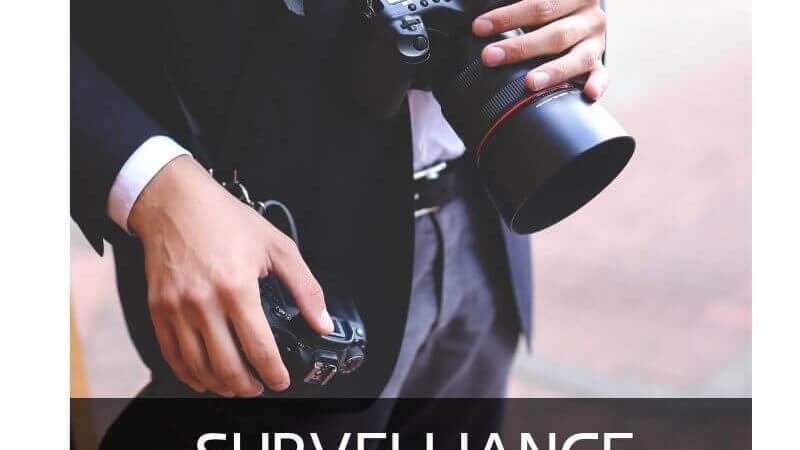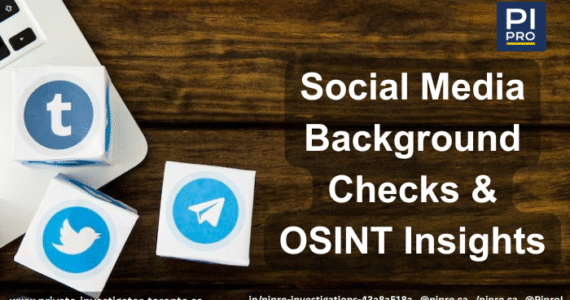
Surveillance Report
What You Should Expect From a Surveillance Investigation Report
A professional private investigator, whether from Toronto or Tokyo, offers a wide variety of services which may include searching for a missing person, searching for stolen property, investigating insurance fraud or corporate espionage, conducting character research to assist in custody battles, collecting evidence to prove a spouse is cheating, etc.
Nevertheless, no matter what type of investigation is run, a private investigator’s work must be characterized by discipline, clear methodology, attention to detail, organizational prowess, and precision.
And nowhere else must these qualities be more evident than in reports he or she provides their customers.
Today we will dig a little deeper into just what is entailed by a private surveillance investigation, what the basic types of private surveillance are, its primary purposes, and finally, what you should expect from a quality surveillance investigation report.
What Is a Surveillance Report and Investigation?
A surveillance investigation is any type that requires the private investigator to keep a close watch over someone or something. In other words, a private surveillance investigation is an “observation” investigation.
A surveillance investigation is one of the most effective data gathering practices of the private investigation industry since it engages the subject directly, whether they are aware of it or not.
The purpose of a surveilling a subject is to gather data and collect evidence which can then be used to report or solve a crime or assist in a legal proceeding.
Surveillance investigations are particularly useful in cheating spouse investigations, insurance fraud, worker’s compensation claims, vandalism cases, and repetitive theft.
Anytime a subject is behaving in a particular clandestine manner under the assumption that he or she is doing so unseen, a surveillance investigation shines.
Depending on the subject and the specific circumstances of the case, a private investigator has at his or her disposal a variety of ways with which to conduct surveillance.
The most common types of surveillance are:
Electronic Surveillance: The 21st century can be best described as the digital century. With the rise of the social network and the ubiquitousness of connected devices, there is a plethora of electronic evidence to be gathered. Electronic surveillance attempts to do just that.
By using a variety of modern tools and gadgets, a private investigator can collect electronic and digital data from the subjects of his surveillance. Evidence gathered in this manner could be in the form of chat logs, email conversations, GPS data, video, audio, and image files.
Physical Observation: physical surveillance is the oldest and most traditional method of doing a surveillance investigation. If you have seen a movie in the last 40 or 50 years, then you have seen one of these investigations take place.
Physical surveillance requires the private investigator to follow a subject to keep a close watch and observe the types of activities he or she is involved in, as well as with whom the subject associates regularly.
Depending on the subject and the type of activities he or she is involved in, the private investigator may follow on foot or by car. Some physical observation investigations require the investigator to stay put and observe the subject from a static position.
Whether tailing a subject or staking out a location, physical observation surveillance is hard work, and it requires that an investigator be vigilant, steadfast, and discrete.
Technical Surveillance: Technical surveillance requires the use of specialized technology to conduct the investigation. For example, using wiretaps to record a private conversation or recording video of a subject by using hidden cameras.
However, technical surveillance begins to infringe on the legal rights of the subjects being surveilled, and as such, it’s only employed in particular circumstances. For example, Canadian law does not permit a private investigator to wiretap an individual’s phone without prior permission from said individual.
This defeats the purpose of conducting a surveillance investigation since the subject would become aware he or she is being observed and would inevitably alter their behaviour.
Surveillance Investigation Report
Once the private investigator has collected sufficient data and evidence, he or she will analyze it and compile it in a Surveillance Investigation Report.
If you have hired a private investigator to conduct this sort of surveillance, this is what you should expect to be included in the report:
The surveillance Investigation Report is a compendium of all the data and evidence gathered by your private investigator during the investigation. Although you can request partial reports during the investigation, you should only expect the full report to be presented at the end.
A private investigator should make sure to include detailed accounts of everything that happened and didn’t happen during the investigation. Therefore, it is crucial that you only retain the services of an experienced and qualified investigator who can all but guarantee a detailed and thorough the end-of-investigation report.
Often these reports are used to complement a legal proceeding, so the report must be up to par.
The report should start with a clear definition of the objective of the investigation. This is extremely important because the aim of your investigation determines to a high degree which parameters the investigator will follow. An investigation with an undefined objective yields mediocre results.
The report should also provide a detailed account of every step of the investigation. This section should include the dates of surveillance, the locations in which surveillance took place, mentions of anything out of the ordinary that might have been observed. This section of the report should thoroughly answer the questions of Who? When? Where ? and How?
Finally, the report should end with a clearly defined conclusion. Your investigator is paid to gather evidence but also to analyze it and report back likely explanations for the behavior of the subject being surveilled. The conclusion should be as detailed and specific as possible. Someone entirely unfamiliar with the situation being investigated should be able to read your investigator’s report and gain an understanding of everything that is going on.




